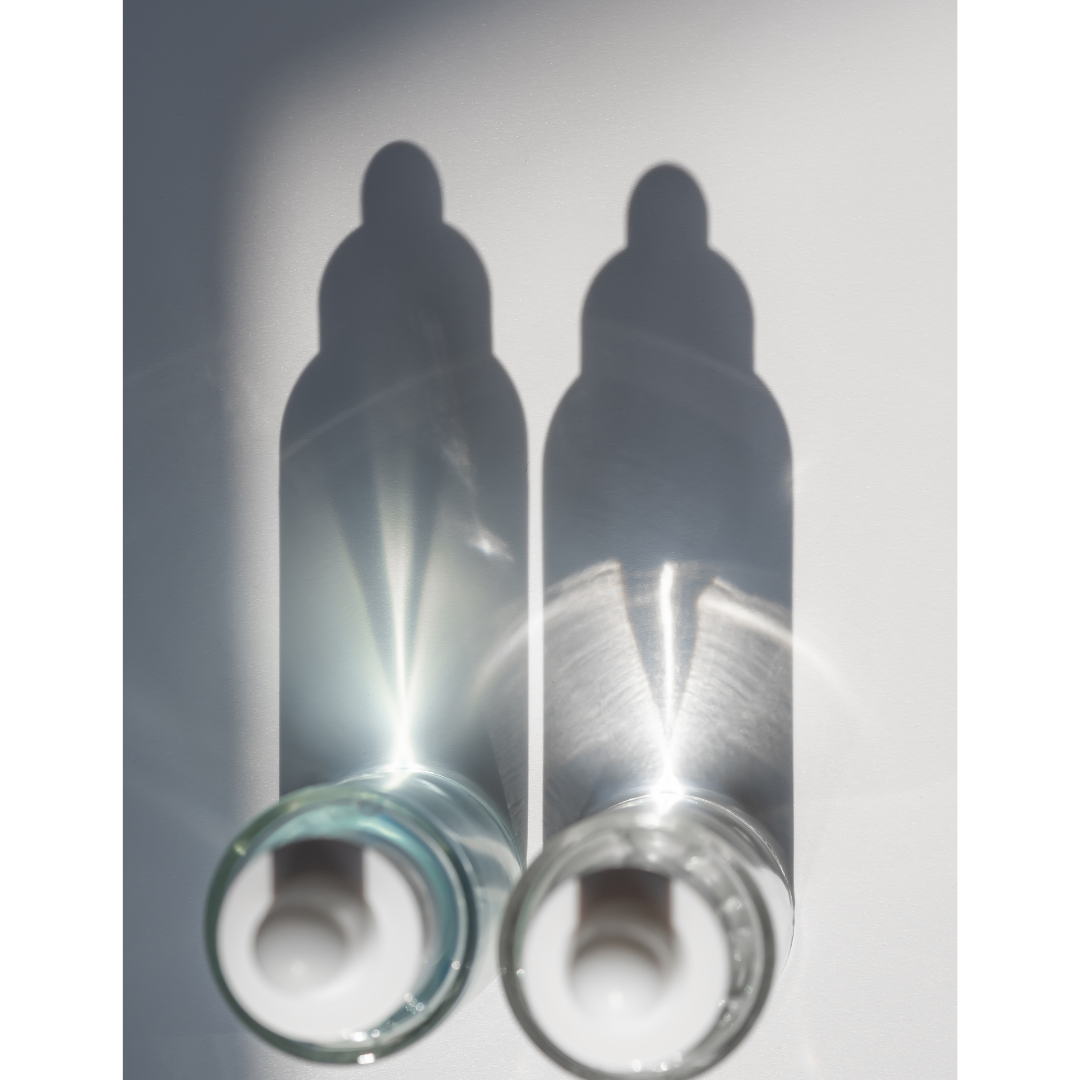
What are the benefits of polyglutamic acid?
Share
What is polyglutamic acid?
Polyglutamic acid, also known as PGA, is a natural polymer derived from glutamic acid. This substance is a key component of the amino acid family and is often extracted from natural products such as soy and wheat.
This polymer has the unique ability to retain water, making it an excellent moisturizing agent for the skin.
What are the benefits of polyglutamic acid?
- Intense hydration: One of the key benefits of polyglutamic acid is its ability to lock in water. Unlike other moisturizing agents, polyglutamic acid is able to retain up to 10 ,000 times its weight in water, creating a reservoir of moisture for the skin. By intensely hydrating the skin, this acid can help prevent the overproduction of sebum in people with naturally oilier skin. Proper hydration can balance sebum production by signaling to the skin that it doesn't need to produce as much oil to compensate for dryness.
- Stimulation of hyaluronic acid production: Polyglutamic acid acts in synergy with the skin's natural hyaluronic acid, stimulating its production. This helps maintain optimal moisture balance and prevent skin dehydration.
- Protective film formation: When applied topically, polyglutamic acid forms a protective film on the skin's surface. This film not only seals in moisture, but also acts as a protective barrier against external aggressors such as pollution and free radicals.
- Suitable for all skin types: Whether you have dry, oily, combination or sensitive skin, polyglutamic acid is versatile and can benefit all skin types. It adapts to the specific needs of each individual, providing tailor-made hydration.
- Reduced signs of aging: Thanks to its ability to maintain optimal hydration, polyglutamic acid can help reduce the appearance of fine lines and wrinkles, leaving skin looking firmer and younger. It can also positively influence the visibility of pores, as firmer skin tends to look more even.
What are the differences between hyaluronic acid and polyglutamic acid?
Although hyaluronic acid and polyglutamic acid share similarities as skin moisturizers, there are essential differences between the two.
- Molecular size: Hyaluronic acid comes in different forms and molecular weights, which means it can penetrate different skin layers. Polyglutamic acid, on the other hand, forms a protective film on the surface, not penetrating as deeply as hyaluronic acid.
- Water-holding capacity: Polyglutamic acid has exceptional water-holding capacity, surpassing that of hyaluronic acid. This makes it a preferred choice for those seeking intense hydration.
- Protective film: unlike hyaluronic acid, polyglutamic acid can form a protective film on the surface. This film acts as a barrier, preserving water and protecting the skin from external elements.
Use of polyglutamic acid
Polyglutamic acid can be incorporated into your skin care routine in a variety of ways. Here are some tips on how to use it:
Moisturizing serum: Opt for serums containing polyglutamic acid for maximum hydration. Apply morning and night to clean skin before your moisturizer.
Eye contour: Because of its ability to reduce the appearance of fine lines, polyglutamic acid can be particularly beneficial in products designed for the eye contour area. Choose creams or serums specifically formulated for this delicate area.
Surface protection: Use products containing polyglutamic acid as a protective base before applying make-up. This provides continuous hydration throughout the day.

What ingredients can be combined with polyglutamic acid?
Polyglutamic acid can be combined with various ingredients to create synergistic cosmetic formulations, offering complementary benefits for the skin. Here are some ingredients commonly associated with polyglutamic acid:
- Hyaluronic acid: The combination of polyglutamic acid with hyaluronic acid, known for its moisturizing properties, can create a powerful hydrating combination. These two ingredients work together to retain water, keepingskin hydrated and helping to reduce the appearance of fine lines and wrinkles.
- Vitamin C: Vitamin C is known for its antioxidant and brightening properties. By combining it with polyglutamic acid, we can create a serum that helps protect skin against free radicals while promoting radiance and luminosity.
- Peptides: Peptides are essential components for skin regeneration. In combination with polyglutamic acid, they can help boost skin firmness and stimulate collagen production, contributing to more toned skin.
- Licorice: Licorice extract is renowned for its soothing, anti-inflammatory properties. Combined with polyglutamic acid, it can help calm irritated skin and reduce redness.
- Ceramides Ceramides are natural lipids found in the skin that help maintain the cutaneous barrier. Combined with polyglutamic acid, they reinforce the integrity of the skin barrier, reducing moisture loss.
- Retinol: Retinol, a form of vitamin A, is often used to stimulate cell renewal. In combination with polyglutamic acid, it can help improve skin texture, reduce imperfections and promote even skin tone.
- Niacinamide (Vitamin B3): Niacinamide is valued for its multiple benefits, including improving skin texture and controlling sebum production. Combined with polyglutamic acid, it can help maintain skin balance.
- Aloe vera extract: Aloe vera is renowned for its soothing and moisturizing properties. By combining it with polyglutamic acid, we can create products that offer both intense hydration and relief from skin irritation.


